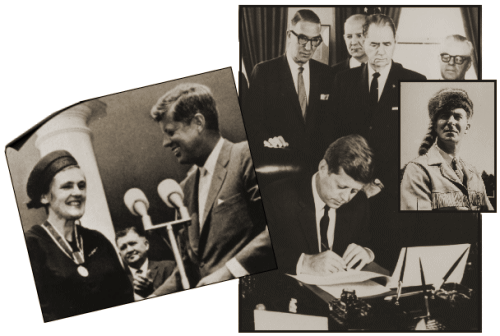
In 1962, I was in college and even though I was applying to medical school at the time, the Kefauver·Harris Amendment to the Federal Food, Drug, and Cosmetic Act was hardly on a college guy’s radar. But I sure knew about Frances Kelsey PhD, the FDA Reviewer who refused to approve Thalidomide and became a national hero. We had all seen those pictures of the Thalidomide Babies. Kefauver was a Senator from the Great State of Tennessee, and we all knew him as the guy with the coon-skin cap, not as a medication reformer. I’m a Tennessean who met Estes Kefauver several times as a kid, but I first read about those Kefauver Hearings in the recent writings of Dr. David Healy [Pharmageddon, The Lasagna Series, etc].
by Jeremy A. Greene, M.D., Ph.D., and Scott H. Podolsky, M.D.New England Journal of Medicine. 2012 367:1481-1483.
By the time Kefauver began his investigation into the pharmaceutical industry in the late 1950s, the escalating expense of lifesaving prescription drugs was illustrating that the free-market approach to medical innovation had costs as well as benefits. From the development of insulin in the 1920s, through the “wonder drug” revolutions of sulfa drugs, steroids, antibiotics, tranquilizers, antipsychotics, and cardiovascular drugs in the ensuing decades, the American pharmaceutical industry had come to play a dominant role in the public understanding of medical science, the economics of patient care, and the rising politics of consumerism. For Kefauver, the “captivity” of the prescription-drug consumer in the face of price gouging and dubious claims of efficacy under-scored the need for the state to ensure that innovative industries worked to the benefit of the average American.
If you’re reading this, you’re likely already convinced that the last twenty years of Randomized Clinical Trials, Treatment Guidelines, and the cry of Evidence-Based Medicine have lead to some of the more egregious misadventures in the history of Medicine and Science itself. And you likely support one or another versions of Clinical Trial Data Transparency schemes currently fighting to be heard as a way of dealing with the widespread corruption. I’ve been vocal enough about my own take on the topic, most recently in in the details…, achilles’ heel…, the wrong compromise…, and repeal the proprietary data act…. I would be wearing out my welcome to say it yet again.
But there’s another larger point that can and does get lost in the shuffle – a point made by Dr. Healy in the background to much of his writing [iincluding his current four part series]. There’s something else very wrong with the modern preoccupation with Randomized Clinical Trials, Standardized Treatment Guidelines, and the overall concept of Evidence-Based Medicine over and above being conduits for corruption [as if that weren’t enough] – something that’s apparently difficult to articulate. Many try to explain it in terms of the loss of the human relationship between doctor and patient:
The amendments granted the FDA the power to demand proof of efficacy — in the form of “adequate and well-controlled investigations” — before approving a new drug for the U.S. market. They also led to a retrospective review of all drugs approved between 1938 and 1962 [the Drug Efficacy Study Implementation program], which by the early 1970s had categorized approximately 600 medicines as “ineffective” and forced their removal from the market.
The American Medical Association firmly opposed the regulation of efficacy by a government agency, arguing that “the only possible final determination as to the efficacy and ultimate use of a drug is the extensive clinical use of that drug by large numbers of the medical profession over a long period of time."
Rather off track just here Mickey, but thought this comment by Prof Charles Oppenheim, Loughborough University, interesting in context of EMA agreement hampering data transparency:
“The just passed changes to UK copyright law mean that anyone in the UK CAN copy such materials, and/or text or data mine them, as long as one has legal access to the documents in the first place and the purpose of the copying/text mining/data mining is non-commercial research or private study, IRRESPECTIVE OF ANY CONTRACTUAL CLAUSES THAT SAY THE CONTRARY. This only applies to UK citizens, not to the rest of the EU though.”
http://usvsth3m.com/post/88475206993/a-guest-post-by-dr-ben-goldacre-why-are-the-results-of
Excellent posts
http://endyourdepressionnow.blogspot.in/
Here are my views on the subject